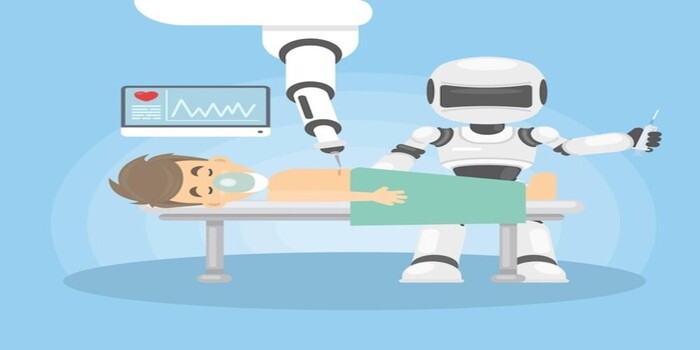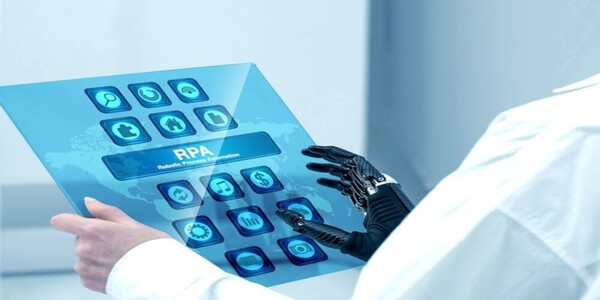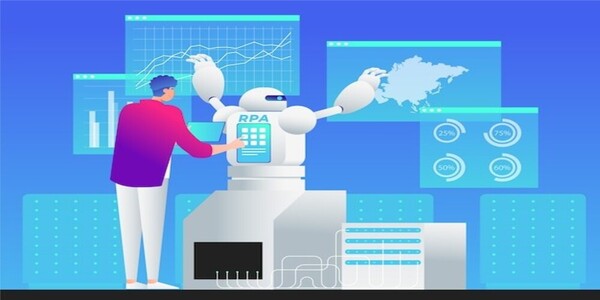
Robotic Process Automation (RPA) is transforming how healthcare operations are being managed in the digital era. RPA is an advanced form of automation that has brought significant efficiency gains and cost savings to many industries across the world, and it’s now quickly becoming a staple of successful healthcare organizations. With this new technology gaining increased traction within the industry, it can be difficult to identify which solutions offer best-in-class benefits for streamlining business processes. In this blog post, we will explore some of the top RPA solutions available today that are designed to provide maximum return on investment within healthcare operations.
Overview of RPA and its Benefits for healthcare organizations

Robotic Process Automation (RPA) is a technology that uses software robots or “bots” to automate repetitive and rule-based tasks. RPA can be used to automate a variety of tasks, including data entry, claims processing, scheduling, and billing.
In healthcare organizations, RPA can bring a variety of benefits, including:
- Increased efficiency: RPA can automate repetitive tasks, allowing healthcare professionals to focus on higher-level tasks that require human expertise. This can lead to increased productivity and efficiency.
- Cost savings: By automating tasks, healthcare organizations can reduce the need for manual labor, which can lead to cost savings.
- Improved accuracy: RPA can help reduce errors and improve accuracy by automating tasks that are prone to human error.
- Better patient outcomes: By automating tasks and reducing errors, RPA can help improve patient outcomes and enhance the overall quality of care.
- Enhanced compliance: RPA can help ensure compliance with regulations and standards by automating tasks that require compliance checks and reducing the risk of human error.
Overall, RPA can help healthcare organizations streamline their operations, reduce costs, and improve patient care, making it an increasingly popular technology in the healthcare industry.
Types of RPA solutions available for healthcare operations

There are several types of RPA solutions available for healthcare operations. These include:
- Rule-based RPA: This type of RPA solution is based on a set of predefined rules that dictate how the software bots should perform specific tasks. Rule-based RPA solutions are often used for repetitive, structured tasks, such as data entry or claims processing.
- Cognitive RPA: This type of RPA solution incorporates artificial intelligence and machine learning algorithms to enable bots to learn from data and improve over time. Cognitive RPA solutions are often used for more complex tasks, such as clinical decision support or medical diagnosis.
- Attended RPA: This type of RPA solution requires human intervention to initiate and monitor the software bots. Attended RPA solutions are often used for tasks that require a human touch, such as patient communication or scheduling.
- Unattended RPA: This type of RPA solution is fully automated and requires no human intervention once the bots have been programmed. Unattended RPA solutions are often used for tasks that can be completely automated, such as claims processing or inventory management.
- Hybrid RPA: This type of RPA solution combines different types of RPA solutions to provide a more comprehensive automation solution. Hybrid RPA solutions can be tailored to meet the specific needs of healthcare organizations and can be used for a wide range of tasks.
Overall, healthcare organizations can choose from a variety of RPA solutions to automate their operations and improve efficiency, accuracy, and patient outcomes.
Examples of top providers offering RPA solutions for the healthcare industry

There are several top providers offering RPA solutions for the healthcare industry. Some of the leading providers include:
- UiPath: UiPath is a leading provider of RPA solutions for the healthcare industry. UiPath offers a wide range of healthcare-specific solutions, including claims processing, patient scheduling, and clinical documentation. UiPath’s solutions can help healthcare organizations automate their operations and improve efficiency, accuracy, and patient outcomes.
- Automation Anywhere: Automation Anywhere is another leading provider of RPA solutions for the healthcare industry. Automation Anywhere’s healthcare solutions include claims processing, revenue cycle management, and supply chain management. Automation Anywhere’s solutions are designed to improve efficiency, accuracy, and patient outcomes.
- Blue Prism: Blue Prism is a global RPA provider with a strong presence in the healthcare industry. Blue Prism’s healthcare solutions include claims processing, patient engagement, and clinical documentation. Blue Prism’s solutions are designed to improve efficiency, accuracy, and patient outcomes.
- WorkFusion: WorkFusion is a leading provider of RPA solutions for the healthcare industry. WorkFusion’s healthcare solutions include claims processing, patient registration, and revenue cycle management. WorkFusion’s solutions are designed to improve efficiency, accuracy, and patient outcomes.
- Kryon: Kryon is a leading provider of attended RPA solutions for the healthcare industry. Kryon’s healthcare solutions include patient communication, engagement, scheduling, and data entry. Kryon’s solutions are designed to improve efficiency, accuracy, and patient outcomes.
How these RPA solutions can improve efficiency, accuracy, and safety in hospitals

RPA solutions can offer numerous benefits to healthcare organizations in terms of improving efficiency, accuracy, and safety in hospitals. Here are some ways RPA solutions can help:
- Streamlining repetitive tasks: RPA solutions can automate repetitive tasks such as data entry, scheduling, and billing, freeing up healthcare workers to focus on patient care. This can improve efficiency and reduce errors, resulting in faster and more accurate data processing and reduced costs.
- Improving accuracy: RPA solutions can significantly reduce human errors that can lead to patient safety issues. For example, when healthcare workers have to input data manually, they may accidentally input incorrect data, leading to medication errors, misdiagnoses, or other problems. RPA solutions can automate data entry and eliminate these errors, improving the accuracy of patient data and reducing the likelihood of adverse events.
- Enhancing patient safety: RPA solutions can improve patient safety by automating processes such as medication dispensing and dosage calculation. RPA solutions can alert healthcare workers if a patient is prescribed a drug that may interact with another medication, or if the prescribed dosage exceeds the recommended limits. This can help prevent medication errors and reduce the risk of adverse events.
- Increasing operational efficiency: RPA solutions can optimize healthcare organizations’ operational efficiency by automating inventory and supply chain management tasks. This can help reduce waste, minimize costs, and ensure that critical supplies and medications are always available when needed.
- Improving patient experience: RPA solutions can improve the patient experience by automating patient communication, scheduling, and registration processes.
Overall, RPA solutions have the potential to revolutionize healthcare operations by improving efficiency, accuracy, and patient safety. By automating repetitive tasks, reducing errors, and enhancing patient experience, RPA solutions can help healthcare organizations deliver better care to their patients.
The best practices for implementing RPA solutions in your organization

Implementing an RPA solution can bring many benefits to your organization, such as improved efficiency, cost savings, and increased accuracy. However, it is important to approach implementation with care to ensure a successful outcome. Here are some best practices for implementing an RPA solution into your organization:
- Define clear objectives: Before implementing an RPA solution, define clear objectives that align with your organization’s overall strategy. Identify specific areas where RPA can bring value, such as streamlining processes, reducing errors, and improving operational efficiency.
- Conduct a thorough assessment: Assess your organization’s current processes and identify areas that are ripe for automation. Analyze process data to identify bottlenecks, inefficiencies, and errors that can be eliminated with RPA. Consider the impact on staff, patients, and other stakeholders, and ensure that any potential risks are identified and addressed.
- Choose the right RPA solution: Select an RPA solution that meets your organization’s specific needs and requirements. Consider factors such as ease of use, scalability, security, and integration with existing systems. Choose a solution that can be customized to your organization’s unique workflows and processes.
- Engage stakeholders: Engage all stakeholders, including management, IT, operations, and end-users, in the implementation process. Communicate the benefits of RPA and involve stakeholders in the design and implementation phases.
- Test and iterate: Thoroughly test the RPA solution before deployment to identify potential issues or bugs. Use a phased approach to implementation, starting with a small pilot project before scaling up. Continuously monitor and evaluate the solution’s performance and make adjustments as needed.
- Maintain and optimize: Maintain the RPA solution and ensure it meets your organization’s changing needs. Optimize the solution by analyzing data and identifying areas for improvement. Regularly update the solution to ensure that it remains compatible with new technologies and systems.
Success stories from organizations already utilizing an RPA solutions to streamline operations

Many organizations across various industries have successfully implemented RPA solutions to streamline operations, reduce costs, and improve efficiency. Here are a few success stories from organizations that have implemented RPA solutions:
- Kaiser Permanente: Kaiser Permanente, one of the largest healthcare providers in the US, implemented an RPA solution to automate its claims processing system. The solution reduced the time required to process claims from several days to just a few hours, resulting in significant cost savings and improved efficiency.
- Deutsche Bank: Deutsche Bank, one of the world’s largest financial institutions, implemented an RPA solution to automate its account opening process. The solution reduced the time required to open an account from several days to just a few hours, resulting in improved customer satisfaction and reduced costs.
- Coca-Cola: Coca-Cola, one of the world’s largest beverage companies, implemented an RPA solution to automate its supply chain management system. The solution reduced the time required to process orders and manage inventory, resulting in improved efficiency and reduced costs.
- Shell: Shell, one of the world’s largest oil and gas companies, implemented an RPA solution to automate its finance and accounting processes. The solution reduced the time required to process invoices and manage financial data, resulting in improved accuracy and reduced costs.
- IBM: IBM, one of the world’s largest technology companies, implemented an RPA solution to automate its HR processes. The solution reduced the time required to process employee data and manage payroll, improving efficiency and reducing costs.
These success stories demonstrate the potential of RPA solutions to transform operations across various industries. By automating repetitive tasks, reducing errors, and improving efficiency, RPA solutions can help organizations achieve their goals and deliver better value to their customers.
In conclusion
Robotic Process Automation offers a unique yet powerful solution to improve operational efficiency and accuracy within the healthcare industry. By leveraging the right providers, organizations can leverage RPA to automate mundane manual processes and tasks with minimal effort, yet generate better outcomes. It is important to identify which areas within an organization could benefit from RPA implementation, as well as implementing best practices for successful implementation. While initial investments may be seem costly upfront, the long-term benefits of cost savings, improved accuracy and safety measures more than outweigh those short-term costs. We’ve seen evidence of this in the success stories provided by top companies already utilizing RPA solutions within their own healthcare operations.


